
Understanding the Factors Behind Brown Stem in Succulents

Succulents are incredibly popular plants due to their unique and eye-catching appearance. With their thick, fleshy leaves and ability to store water, they have become a favorite among both experienced gardeners and beginners. However, one common problem that succulent owners often face is brown stem, a condition where the stem of the plant turns brown and eventually dies.
We will delve into the factors that contribute to brown stem in succulents. We will explore the various causes of this condition, including overwatering, inadequate drainage, and pest infestation. Additionally, we will provide helpful tips and techniques for preventing and treating brown stem in succulents, ensuring that your plants stay healthy and vibrant. Whether you are a seasoned succulent enthusiast or just starting out, this article will provide valuable information to help you understand and address this common issue in succulents.
- Provide proper drainage for succulents by using well-draining soil and pots with drainage holes
- Avoid overwatering succulents, as this can lead to root rot and brown stem
- Ensure that succulents receive adequate sunlight, as insufficient light can weaken the plant and cause the stem to turn brown
- Protect succulents from extreme temperatures, as extreme cold or heat can damage the plant and result in a brown stem
- Monitor succulents for pests and diseases, as infestations can weaken the plant and lead to discoloration of the stem
- Prune damaged or diseased parts of the plant to prevent the spread of infection and promote healthy growth
- Avoid using excessive fertilizer, as this can cause chemical burns and result in a brown stem
- Provide proper air circulation around succulents to prevent the development of fungal infections and other issues
- Avoid overcrowding succulents, as this can lead to competition for resources and stress on the plants, resulting in a brown stem
- Be mindful of the specific needs of different succulent species, as some may require specific care and conditions to prevent a brown stem
- Frequently Asked Questions
Provide proper drainage for succulents by using well-draining soil and pots with drainage holes
One of the most crucial factors in preventing brown stem in succulents is providing them with proper drainage. Succulents are adapted to thrive in arid conditions, and their roots are susceptible to rot if they are constantly sitting in damp soil.
To ensure adequate drainage for your succulents, it is essential to use well-draining soil. This type of soil allows excess water to flow through and prevents it from accumulating around the roots. You can either purchase a pre-made succulent soil mix or create your own by combining regular potting soil with coarse sand or perlite.
In addition to using well-draining soil, it is equally important to choose pots with drainage holes. These holes allow excess water to escape, preventing the soil from becoming waterlogged. If your favorite decorative pot doesn't have drainage holes, consider using it as a decorative outer pot and placing your succulent in a separate plastic or terracotta pot with drainage holes inside.
Remember to avoid overwatering your succulents as well. Allow the soil to dry out completely between waterings, as succulents are more tolerant of underwatering than overwatering. This practice will help prevent the development of brown stem caused by root rot.
 Troubleshooting: Is My Succulent Dying from the Bottom Up?
Troubleshooting: Is My Succulent Dying from the Bottom Up?Avoid overwatering succulents, as this can lead to root rot and brown stem
Overwatering is one of the main factors that contribute to the development of brown stem in succulents. Succulents are known for their ability to store water in their leaves and stems, which allows them to survive in arid conditions. However, when they are overwatered, their roots become waterlogged and are unable to absorb oxygen properly.
This excess moisture in the soil creates a favorable environment for fungal and bacterial pathogens to thrive. These pathogens attack the roots, causing them to decay and ultimately leading to the development of brown stem.
Signs of overwatering
It is important to be able to identify the signs of overwatering in succulents to prevent the onset of brown stem. Some common signs include:
- Yellowing or wilting leaves
- Soft and mushy stems or leaves
- Roots that appear brown or black and smell rotten
- The presence of mold or fungus on the soil surface
These signs indicate that the succulent is receiving more water than it can handle and that immediate action is required to save the plant from further damage.
Tips to prevent overwatering
By following these tips, you can avoid overwatering your succulents and reduce the risk of brown stem:
- Water sparingly: Only water your succulents when the soil is completely dry. Stick your finger into the soil to check for moisture levels before watering.
- Use well-draining soil: Succulents require soil that allows water to flow through easily. Consider using a specialized succulent or cactus mix to ensure proper drainage.
- Choose appropriate containers: Ensure your pots have drainage holes to allow excess water to escape. Avoid using saucers or trays that can trap water.
- Establish a watering schedule: Create a consistent watering routine based on the specific needs of your succulents. Some species may require more frequent watering than others.
- Avoid misting: Instead of misting your succulents, which can lead to excessive moisture, opt for bottom watering by placing the pot in a tray of water for a short period of time.
Remember, proper watering practices are crucial in preventing the development of brown stem in succulents. By understanding the signs of overwatering and implementing these preventative measures, you can ensure the health and longevity of your succulent collection.
 The Common Reasons Succulents Die Easily: Understanding the Challenges
The Common Reasons Succulents Die Easily: Understanding the ChallengesEnsure that succulents receive adequate sunlight, as insufficient light can weaken the plant and cause the stem to turn brown
1. Positioning the succulents
When it comes to succulents, sunlight is crucial for their overall health and appearance. Insufficient light can weaken the plant, leading to a brown stem. To prevent this, make sure to position your succulents in a location where they receive adequate sunlight.
2. Understanding the light requirements
Each succulent species has different light requirements. Some succulents thrive in bright, direct sunlight, while others prefer indirect or partial shade. Research the specific needs of your succulents and place them accordingly.
3. Rotating the plants
Even if you have placed your succulents in a spot with ample sunlight, it's essential to rotate them regularly. By rotating the plants, you ensure that all sides receive equal exposure to light, preventing the stem from turning brown due to uneven light distribution.
4. Using grow lights
If you live in an area with limited natural light or during the winter months when sunlight is scarce, consider using grow lights. These artificial lights mimic natural sunlight and can be adjusted to meet the specific light requirements of your succulents.
5. Monitoring for signs of inadequate light
Regularly inspect your succulents for signs of inadequate light. If you notice that the stem is turning brown, it could be an indication that the plant is not receiving enough sunlight. Adjust the positioning or lighting conditions accordingly to ensure the succulent's health.
Adequate sunlight is essential for the well-being of succulents. By understanding their light requirements, positioning them correctly, and monitoring for signs of inadequate light, you can prevent the stem from turning brown and ensure your succulents thrive.
 Could Succulents Be Vulnerable to Fungal Infections?
Could Succulents Be Vulnerable to Fungal Infections?Protect succulents from extreme temperatures, as extreme cold or heat can damage the plant and result in a brown stem
Protecting your succulents from extreme temperatures is crucial in preventing brown stem. Succulents are known for their ability to tolerate a wide range of temperatures, but they have their limits. Exposure to extreme cold or heat can cause significant damage to the plant, resulting in a brown stem.
When temperatures drop below the succulent's cold-hardiness zone, the cells in the stem can freeze and burst, leading to tissue damage. Similarly, excessive heat can cause the cells to dry out and die, causing the stem to turn brown.
To prevent this, it is essential to monitor the temperature conditions and take necessary precautions. If you live in an area prone to frost or extreme cold, consider bringing your succulents indoors during the winter months. Alternatively, you can cover them with frost blankets or move them to a sheltered location, such as a greenhouse or covered porch.
During hot summer months, provide your succulents with some shade or partial sun to avoid overexposure to intense sunlight. If the temperatures are scorching, consider using shade cloth or light-colored pots to reflect some of the heat.
Proper watering practices also play a vital role in preventing brown stem caused by extreme temperatures. Avoid watering your succulents in the evening or during cold weather, as excess moisture in the soil combined with low temperatures can lead to rotting and brown stem. Instead, water them in the morning, allowing the excess water to evaporate throughout the day.
Protecting your succulents from extreme temperatures is crucial in preventing brown stem. By being mindful of temperature conditions, providing shade or shelter when needed, and following proper watering practices, you can ensure the health and longevity of your succulents.
 Can Succulents Survive Fire? Fire Safety for Hardy Plants
Can Succulents Survive Fire? Fire Safety for Hardy PlantsMonitor succulents for pests and diseases, as infestations can weaken the plant and lead to discoloration of the stem
One of the common issues that succulent owners may encounter is the development of brown stem in their plants. This discoloration can be alarming, as it indicates that something is not quite right with the succulent's health. To understand the factors behind brown stem in succulents, it is important to monitor these plants for pests and diseases.
Pests
Succulents are not immune to pest infestations, and these tiny intruders can wreak havoc on their overall health. Common pests that can cause brown stem in succulents include mealybugs, scale insects, and spider mites. These pests feed on the plant's sap and can weaken it, leading to discoloration of the stem.
To prevent pest infestations, regularly inspect your succulents for any signs of these invaders. Look for small white cotton-like masses (mealybugs), tiny brown bumps (scale insects), or webbing (spider mites) on the plant. If you spot any of these signs, take immediate action to eliminate the pests and treat the affected succulent.
Diseases
Succulents can also be susceptible to various diseases, which can contribute to the development of brown stem. Fungal infections, such as root rot or stem rot, are common culprits behind discoloration in succulent stems.
 Identifying Root Rot in Succulents: Yellow Leaves and Soft Stems
Identifying Root Rot in Succulents: Yellow Leaves and Soft StemsTo prevent fungal diseases, ensure that your succulents are not overwatered and have well-draining soil. Avoid letting water sit in the saucer or container, as excess moisture can create a favorable environment for fungal growth.
Overall Plant Health
In addition to pests and diseases, the overall health of the succulent can also play a role in the development of brown stem. Factors such as inadequate sunlight, improper watering, or nutrient deficiencies can weaken the plant, making it more susceptible to discoloration.
Make sure your succulents receive the appropriate amount of sunlight for their specific species. Most succulents thrive in bright indirect light, while some may require more direct sunlight. Additionally, establish a consistent watering routine, allowing the soil to dry out between waterings to prevent overwatering.
Lastly, provide your succulents with the necessary nutrients by fertilizing them. Use a balanced fertilizer specifically formulated for succulents, following the instructions on the packaging to avoid over-fertilization, which can also harm the plant.
By monitoring your succulents for pests and diseases, ensuring proper care, and addressing any issues promptly, you can prevent and mitigate the development of brown stem in these beautiful plants.
Prune damaged or diseased parts of the plant to prevent the spread of infection and promote healthy growth
 Causes of White Spots on Succulent Leaves: A Comprehensive Guide
Causes of White Spots on Succulent Leaves: A Comprehensive GuideOne of the key factors in preventing brown stem in succulents is regular pruning. Pruning involves removing any damaged or diseased parts of the plant to prevent the spread of infection and promote healthy growth.
When succulents develop a brown stem, it is often an indication of rot or fungal infection. By pruning affected areas promptly, you can stop the spread of the infection and save your plant.
Before you start pruning, make sure you have a clean and sharp pair of pruning shears or scissors. This will help minimize damage to the plant and reduce the risk of introducing further infection.
Here are some steps to follow when pruning a succulent with a brown stem:
- Identify the affected areas: Carefully examine your succulent and identify any parts of the stem that have turned brown or appear to be decaying. These areas are likely to be the source of the infection.
- Sanitize your tools: Before you start pruning, it is crucial to sanitize your pruning tools to prevent the spread of infection. You can use rubbing alcohol or a solution of one part bleach to nine parts water to disinfect your tools.
- Cut the affected areas: Once you have identified the affected areas, use your clean and sharp pruning shears or scissors to make clean cuts just above the healthy tissue. Ensure that you remove all the brown or decaying parts of the stem.
- Dispose of the pruned parts: After pruning, it is essential to dispose of the pruned parts properly. Do not compost the infected plant material, as it may contain pathogens that can spread to other plants.
- Monitor and care for the plant: After pruning, monitor your succulent closely for any signs of further infection or disease. Provide proper watering, sunlight, and well-draining soil to promote healthy growth and prevent future issues.
Remember that prevention is key when it comes to brown stem in succulents. Regularly inspect your plants for any signs of decay or infection and take immediate action to address the issue. By practicing proper pruning and care techniques, you can ensure the health and longevity of your succulent collection.
Avoid using excessive fertilizer, as this can cause chemical burns and result in a brown stem
Excessive fertilizer usage is one of the primary factors that can lead to the development of brown stems in succulents. While fertilizers are essential for providing the necessary nutrients for plant growth, using them in excess can have detrimental effects on succulents.
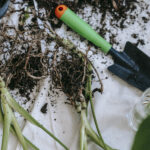 Why Your Succulent Died Overnight and How to Prevent It
Why Your Succulent Died Overnight and How to Prevent ItWhen succulents are exposed to too much fertilizer, they can experience a phenomenon known as chemical burns. This occurs when the concentration of nutrients in the soil is too high, leading to an imbalance in the plant's cellular processes. As a result, the stem of the succulent may turn brown as a sign of distress.
To prevent the occurrence of brown stems in succulents due to excessive fertilizer use, it is crucial to follow a balanced fertilization regime. Instead of applying fertilizer frequently, it is recommended to use a diluted solution during the growing season. This allows the succulent to absorb the necessary nutrients without overwhelming it.
In addition to being mindful of the frequency of fertilizer application, it is equally important to choose the right type of fertilizer for succulents. Opt for a well-balanced, slow-release fertilizer specifically formulated for succulent plants. Such fertilizers provide a controlled release of nutrients over an extended period, reducing the risk of chemical burns.
Furthermore, it is essential to pay attention to the specific fertilizer requirements of different succulent species. Some succulents may require more or less fertilizer than others, and using a one-size-fits-all approach may lead to nutrient imbalances and brown stem development.
By understanding the potential negative effects of excessive fertilizer use and adopting a balanced fertilization approach, succulent enthusiasts can effectively prevent brown stems and promote the overall health and vitality of their plants.
Provide proper air circulation around succulents to prevent the development of fungal infections and other issues
One of the key factors that contribute to the development of brown stem in succulents is the lack of proper air circulation. Succulents, like all plants, require fresh air to thrive and stay healthy. When succulents are grown in environments with poor air circulation, they become more susceptible to fungal infections and other issues.
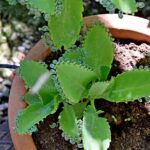 Are Mother of Thousands Succulents Toxic to Pets?
Are Mother of Thousands Succulents Toxic to Pets?To prevent the development of brown stem in succulents, it is crucial to provide them with adequate air circulation. This can be achieved by placing them in well-ventilated areas or using fans to circulate the air around them. Proper air circulation helps in reducing the humidity levels around the plants, as excessive moisture can lead to the growth of fungi and bacteria.
Additionally, it is important to avoid overcrowding succulents as this can also impede air circulation. When succulents are too close together, their leaves and stems can rub against each other, creating an environment conducive to the spread of fungal diseases.
Tips for improving air circulation around succulents:
- Space out the succulents to allow for airflow between plants.
- Position the succulents in areas with good ventilation or near open windows.
- Use fans or air circulation devices to keep the air moving around the plants.
- Avoid placing succulents in areas with high humidity or poor air movement.
By providing proper air circulation, you can significantly reduce the risk of brown stem and other fungal infections in your succulents. Remember to regularly monitor the airflow around your plants and make necessary adjustments to ensure their well-being.
Avoid overcrowding succulents, as this can lead to competition for resources and stress on the plants, resulting in a brown stem
One of the key factors that can lead to a brown stem in succulents is overcrowding. When succulents are planted too closely together, they end up competing for resources such as sunlight, water, and nutrients. This competition can cause stress on the plants, which ultimately manifests as a brown stem.
Overcrowding limits the availability of sunlight for individual succulents, as the leaves of neighboring plants can cast shadows on each other. Sunlight is essential for succulents as they require it for photosynthesis, the process that enables them to produce energy. Without adequate sunlight, succulents may struggle to generate enough energy and can start to exhibit signs of stress, including browning of the stem.
 Identifying Root Rot: Spotting Unhealthy and Healthy Roots
Identifying Root Rot: Spotting Unhealthy and Healthy RootsIn addition to sunlight, overcrowding also affects the water and nutrient availability for succulents. When succulents are planted too closely together, their roots can become entangled, making it challenging for them to access water and nutrients in the soil. As a result, some succulents may receive more water and nutrients than others, leading to an imbalance and potential stress on the plants. This imbalance can manifest as a brown stem as the succulent tries to cope with the uneven distribution of resources.
How to prevent overcrowding in succulents:
- Spacing: When planting succulents, ensure there is adequate spacing between each plant. This allows them to have enough room to grow and access resources without competing with their neighbors.
- Regular repotting: As succulents grow, they may outgrow their current pots. It is essential to repot them into larger containers, providing them with more space for their roots and preventing overcrowding.
- Thinning out: If you notice that your succulents have become overcrowded, consider thinning them out by removing some of the plants. This will create more space and reduce competition for resources.
By taking these preventive measures, you can minimize the risk of overcrowding and help your succulents thrive. Remember, a well-spaced and properly cared for succulent will be less likely to develop a brown stem due to stress and competition for resources.
Be mindful of the specific needs of different succulent species, as some may require specific care and conditions to prevent a brown stem
One of the most common issues that succulent enthusiasts encounter is the development of a brown stem in their plants. This discoloration can be concerning, as it is often an indication of underlying problems that need to be addressed. To better understand this issue, it is essential to be mindful of the specific needs of different succulent species, as some may require specific care and conditions to prevent a brown stem.
1. Overwatering
Overwatering is a primary cause of brown stems in succulents. These plants have adapted to survive in arid environments, and their roots are not designed to handle excessive moisture. When succulents are watered too frequently or their soil does not have proper drainage, the excess water can lead to root rot. As a result, the stem may turn brown as the plant struggles to absorb water and nutrients.
2. Underwatering
On the other hand, underwatering can also contribute to brown stems in succulents. While these plants are drought-tolerant, they still require regular watering. When they do not receive enough water, their leaves and stems may start to wither and turn brown. It is important to strike a balance and provide succulents with adequate hydration without overdoing it.
3. Inadequate sunlight
Succulents thrive in bright, indirect sunlight. Insufficient light exposure can lead to weak growth and a weakened immune system, making succulents more susceptible to diseases and pests. When succulents do not receive enough sunlight, their stems may become discolored and turn brown. It is crucial to place succulents in a location where they can receive at least six hours of sunlight per day.
 Managing White Fuzz on Succulents: Causes and Solutions
Managing White Fuzz on Succulents: Causes and Solutions4. Poor soil conditions
The type of soil used for succulents is crucial for their overall health. Using a well-draining soil mix specifically formulated for succulents is essential to prevent waterlogging. If the soil retains too much moisture, it can contribute to root rot and subsequently result in a brown stem. Additionally, soil that lacks essential nutrients can cause the succulent to become weak and more prone to developing brown stems.
- Solution: Ensure your succulents are planted in a well-draining soil mix suitable for their specific needs.
- Solution: Adjust your watering routine to strike a balance between underwatering and overwatering.
- Solution: Place your succulents in a location where they can receive adequate sunlight.
- Solution: Monitor the health of your succulents and address any signs of disease or pest infestation promptly.
By understanding and addressing these factors, you can prevent the occurrence of brown stems in your succulents, ensuring their overall health and longevity.
Frequently Asked Questions
1. What is brown stem in succulents?
Brown stem in succulents is a condition where the stem of a succulent plant turns brown or dark in color, indicating tissue damage or rot.
2. What causes brown stem in succulents?
Brown stem in succulents is commonly caused by overwatering, poor drainage, fungal or bacterial infections, or physical damage to the stem.
3. How can I prevent brown stem in succulents?
To prevent brown stem in succulents, it is important to water them sparingly and ensure proper drainage. Avoid overwatering and protect the plants from physical damage.
4. Can I save a succulent with a brown stem?
It is possible to save a succulent with a brown stem if the damage is not severe. Trim off the affected parts, improve watering practices, and provide optimal growing conditions to promote new healthy growth.
If you want to read more articles similar to Understanding the Factors Behind Brown Stem in Succulents, you can visit the Pests and Diseases category.

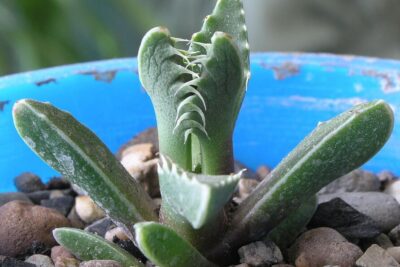

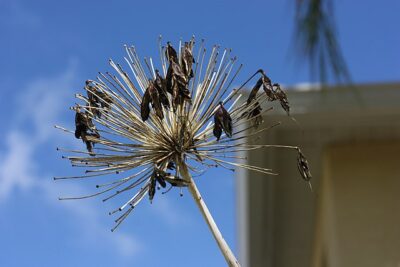

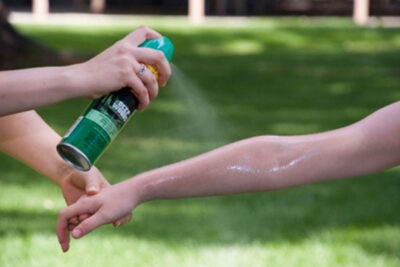
You Must Read